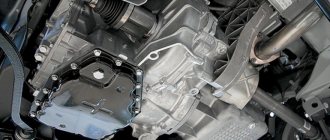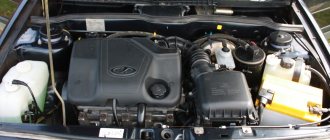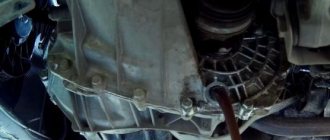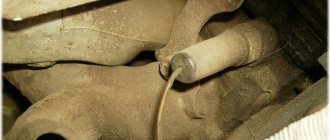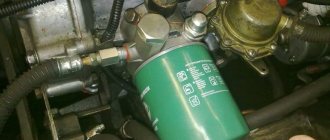Possible problems
Of all the reasons why a jack (diamond-shaped, rolling or bottle) may not function, 3 key situations should be distinguished: a malfunction of the rod, a clogged system or failure of the valves. Let's look at each point in more detail.
System clogged
It can be caused by the penetration of dirt, dust or air into the oil. When air enters, the supporting rod of the jack may stop rising, begin to spring intensely, or completely sit down under the load.
Accumulated lumps of dirt can inhibit the movement of valves, which will no longer seal the channels hermetically, allowing oil to pass in both directions.
In this situation, the emphasis will not be held in one position, gradually descending to the starting point.
Ball valve malfunction
In addition to blockages, mechanical defects may occur . The ball valve at the tip of the spring, resting against the cone-shaped groove, can separate or get caught on other components of the system. Then the rod will not come out at all, since the oil circulation in the system is disrupted, and pumping does not occur. This malfunction is more complicated and requires disassembling the jack. If there are signs of wear on the ball valves, they must be replaced.
A bent rod may be a consequence of failure to comply with storage or maintenance conditions and may result from working with heavy loads and as a result of non-compliance with the rules of use. In the first episode, the piston may become covered with rust, which will weaken the tightness of its connection to the surface of the cylinder, as a result of which oil will leak. If you lift loads higher than the permitted limit, the rod may bend. The possibility of such a malfunction increases with the maximum extension of the screw and the jack installed crookedly on the ground. A bent rod is a very serious malfunction that can rarely be corrected even by specialized services.
How to bleed a rolling Chinese jack
If the service life of the Chinese rolling jack has come to the end, that is, it can no longer hold the car, then the device can be pumped. This will allow you to avoid spending extra money on new devices. When carrying out work, safety precautions must be observed.
For this purpose, pull out two cotter pins, which serve to lock the lever axis, and remove the lever. When the oil is passed through the piston, the part is carefully pulled out so that the liquid does not hit the face. Then an inspection is carried out inside the device. If the sealing gasket has become unusable, this is due to the ingress of dirt. If there is no new gasket, you can turn the old one over.
You need to pour oil into the piston hole by gently lifting the jack with your hand. Removing the garter spring will make the whole procedure easier. Oil is added when the top point is reached. It is pushed by the piston until its movement becomes tight. If there is no boot in the jack, put it on to prevent dirt from getting into the cylinder. You can use silicone grease when bleeding. At the end, screw the blocking wire.
The rolling jack will work according to the following principle:
- The piston lever will be held tight by the blocking wire.
- The boot will be sandwiched between the lever and the cylinder.
As a result, this will help avoid contamination of the cylinder, which will increase the service life of the mechanism. Raising the device as much as possible will protect your face from getting lubricant from the cylinder.
Mlyn, jack for bleeding
if you do everything correctly, then first buy special oil for jacks (any collective farm is bad), and it has instructions for pumping
Raise the pumping handle up Close the screw (raise position) be sure to jack without load A slight but sharp blow on the pumping handle. The stroke of the handle during impact is not more than ½ HELPS.
Probably screw 3 – for draining/filling oil into the pre-pump chamber, 2 – releasing air from the post-pump chamber, where you actually pump oil by moving the handle, 1 – bypass valve between the chambers. In addition to the lack of oil, there may be a problem with the bypass, which is also indicated by the fact that you are leaking oil from under the 1st screw. Maybe the valve seat is lifted up, maybe the spring is weakened. The brother had some kind of Chinese jack, the bypass was made in the form of a spring with a plastic conical part. When he took it out, it was no longer conical. In general, he picked up a couple of balls, drove one into the valve seat, turning the seat from conical to spherical, changed the balls and all
Read also: Which electric heating to choose for a private home
I’ll add. Based on the above, the bleeding method should be as follows: 1. the jack is folded, unscrew the 3rd screw, pour oil (I don’t know how much, I probably would have filled it to capacity) 2. lift a small load with the jack to the top position, loosen screw 2 and wait until it cools down oil won’t flow, tighten screw 3. fold the jack, do step 1 again and that’s it
There is often information that rolling jacks often stop holding the load after a short time. The same situation happened to me. I decided to change the stub bushings, hung the car, substituted the bars, but did not loosen the jack, as it was holding it before. After a while I looked, and the jack went down without any load. I didn't like it, but oh well. Changed the bushings. You need to put on the wheel. I start to lift the car with a jack, and it immediately lowers. That is, if you pump at a frantic pace, then somehow it still rises, but as soon as you stop, it falls. Somehow I put the wheel on and decided to disassemble the jack. Here's my handsome guy:
I scattered it. I took off the pump, removed the outer casing, took out the rod with the cuff, and then I just went nuts. What do I see on the inside of the cylinder, in which the rubber cuff goes:
You can feel them when you run your finger over them. It is clear that they are made artificially. If the jack is not raised to the maximum height, then the cuff will not reach these scratches, but this is unlikely to happen unless you check its performance in a store when selling it. And here's what happened to the cuff:
How to increase sales of jacks? Yes, it is necessary to artificially limit their service life. Not many will look for the cause of the malfunction and go buy a new one. The dear toad will strangle the borrower and take the same one in the hope that it will work for at least a year. I decided not to buy a new one, but to grind the cylinder. Don’t think that I’m a weak person, but I couldn’t unscrew this cylinder, although I made a decent effort. The gas key strips off the metal, but this garbage didn’t want to turn away.
I spat on it and decided to grind off the scratches and stuff cold welding into the recess. I polished them with a scratch pad, then welded the seams and polished them again. It turned out fine, the scratches were no longer felt to the touch
I bought a new cuff. I measured the old one and got the size 25x14x7.
Well, nothing. Small tool for a drill
and a piece of sandpaper reduced the outer diameter to almost 26 mm (then there is the edge of the side), and with a 15mm drill I ground down the inner diameter to 13.4 mm. I put everything back together and “oh, miracle!” the jack worked. True, under its own weight and with a spring, it cannot lower itself to the bottom. Maybe it will work out over time, but with a little help with your hand, everything will be fine. I raised the car to the top a couple of times and let it bleed a little to check how it held up. Holds. Let's see how long this repair will last. By the way, the purchased domestic cuff is harder than the original one, and in the store they said that it is special for hydraulics.
What to do?
Doesn't hold under load
The lowering of the rod when it rests on the lifted load and sometimes without much pressure happens for 2 reasons: lack of oil or failure of the valves. Let's consider each option separately.
The lack of oil is due to normal leakage due to poor sealing; the jack bypasses oil. As a rule, this is the result of prolonged storage of the jack with the shut-off valve turned off or the wear of the gaskets. The issue can be resolved by adding oil and bleeding the device. It is advisable to use specialized oils for hydraulic systems; at worst, ordinary technical oils will do. If after filling the oil leaks even with the tap tightly closed, you need to buy a repair kit and change all the seals.
Valve failure may be due to contamination of the system or a mechanical defect. There is no need to disassemble the lifting device right away.
It would be wiser to first rinse the channels and internal surfaces that are dirty. For this purpose, drain all the oil from the device and add flushing liquid (gasoline or kerosene will do). It is pumped several times, the used liquid is drained, clean liquid is poured in, and so on 2 more times.
If washing has no effect, you will need to disassemble the jack and inspect the valves. They may not fit tightly due to loose springs or have deformed or worn out balls. The first reason is the most likely and can be corrected by rotating the spring or adding a small washer under it to increase the pressure by reducing the distance to the valve. A worn or deformed ball needs to be replaced.
Doesn't lift well
One of the most common problems is reducing the piston stroke speed to a minimum or idling too much. This malfunction is often associated with a reduction in lift height and a decrease in the maximum load. The main reason for such a problem lies in the airing of the system, which occurs as a result of a decrease in the oil level. Restoring the hydraulic jack to functionality in such a situation is quite simple. To do this, you will need 150-300 milligrams of oil and flushing liquid (if the device is older than 2 years).
First, the shut-off valve is loosened one turn from the tightened position. Then the pump rod is lowered, the stop is all the way to the end.
The plug on the fill hole is unscrewed or removed (if it is made of rubber), and the used oil is drained. When the device is many years old, it is possible that its channels and the surface inside are clogged with dirt, which can be an equally significant reason why the jack does not lift well. It needs to be washed, it wouldn't hurt to wash it several times.
Instructions for proper bleeding of the jack device
Among the advantages of jacks, there is a rigid structure, as well as the height of lifting the load from the ground, the highest load capacity with smooth operation, and the minimum pick-up height. All these advantages result in high efficiency.
The reasons for equipment failure can be any. For example, prolonged use of the device can cause air to accumulate in the form of bubbles. This reduces the efficiency of using the jack, that is, its effectiveness drops sharply. This occurs due to air entering the hydraulic mechanism due to a lack of hydraulic fluid.
Bleeding and troubleshooting methods for the jack
The following actions will allow you to bring the device to its original state:
- Bleeding should begin if the bypass valve with the oil tank plug is open.
- The pump of the device is pumped a certain number of times, which will displace all accumulated air from the working cavity into a special container for liquid.
- Close the opening of the oil tank and the bypass valve.
If all work is carried out correctly and air is removed, the device should operate in good condition.
Otherwise, the above steps, according to the instructions, are repeated.
Read also: How to use a level and staff video lessons
How to properly bleed a jack using a different algorithm
It is recommended to replace corroded parts.
Since the above method of bleeding the jack is not the only one, you can perform the following steps step by step:
- When lifting the load slowly with a jack or if it is completely malfunctioning, the presence of air in the cavity of the device is determined.
- The locking needle should not be unscrewed by 1.5-2 turns, and the jack plunger should be raised by the screw to the top point, which is the extreme one, and then it should be lowered again to return to the bottom position.
The last operation is repeated 2-3 times. To prevent this problem from occurring, you should periodically check the fluid level in the jack. If it is not enough, then the oil must be added.
Bleeding the jack is repeated even after contaminants enter the working cavity. To remove contamination, the head of the housing is unscrewed, then kerosene is poured into its base. Next, the jack is pumped, having previously unloaded the shut-off needle. Having completed the operation, the kerosene is removed, and the working cavity is filled with clean hydraulic fluid.
In general, the algorithm looks like this:
- Oil is poured in, then the box is closed.
- The piston should be pumped by lifting it to failure.
- The plug is unscrewed and pressed onto the piston, releasing air from the cylinder.
- Add oil, closing the plug, etc.
This is done until all the air is released and the hydraulic oil is released in accordance with the bleeding of the brakes.
Recommendations
To increase the service life of the jack, it is advisable to follow the following rules.
- The lifting device oil must be changed twice a year. If the hydraulic jack is used every day, then it must be replaced at least once a month and must be washed.
- Any replacement oil can be used . But for the winter season, it is advisable to fill exclusively with synthetic types of oils.
- To prevent the lubricant from thickening in winter, the jack should be kept in a dry and warm room.
- When lifting work is carried out in winter, it must be remembered that if the device is used for a long time in severe frost, it can become unusable. In this regard, it is recommended to work with it in the most extreme cases and for a short time.
The ideal “repair” of a lifting device is preventative work to prevent breakdowns, in other words, continuous maintenance and timely replacement of the working fluid with pumping. Since eliminating any malfunction will require spending personal time, and sometimes some money. In this regard, it is necessary to follow all instructions for using hydraulic lifting devices, in which case they will work for quite a long time.
For repairs to a hydraulic jack, see below.
What elements does the device of hydraulic jacks include?
Table of characteristics of jacks.
The lever of the device activates the pump, which pumps hydraulic fluid into the cylinder through a special valve. Hydraulic or working fluid is the oil that is squeezed out in the cylinder. The jack is lowered back down with the valve located on the pump open to allow hydraulic fluid to flow into it.
Using hydraulic jacks is easy. They must be located on level ground underneath the vehicle. After closing the valve of the device, its lever is pressed until the car is raised to the required height from the surface.
To lower the car back to the ground after the tire has been replaced, the valve opens smoothly counterclockwise. When the device is in its original position, the valve is closed back by turning it in the opposite direction.
How to bleed a jack correctly
Operating principle of a screw jack.
The jack, like any mechanism, requires periodic inspection and maintenance. Liquid can be added to the cylinder, since the use of the device is associated with oil leakage through the seals and oil seals. When using a jack to repair a car, use a safety stand. By adjusting the device with it, you can prevent the car from falling to the ground if the jack is faulty.
Storing the device in places where there is high humidity leads to rust on the cylinder. For the same reason, the working cylinder can become unusable. However, the disadvantage of a hydraulic jack is its slow operating speed and low lifting height. Some models have quite a large dead weight, so transporting it in the trunk is not very convenient.
How to register
Use of all the benefits of a personal account is available to existing clients of the provider after concluding an agreement. To register, you need to go to the official website www.akado.ru via a PC, tablet or phone, doing the following:
1. In the upper right corner, select “Personal Account”.
2. For authorized users, login using a login or contract number and password, and for those who logged in for the first time or forgot their password, you need to follow the link “Are you logging in for the first time or have you forgotten your password?”
3. Select authorization by E-mail or phone number.
It is important to indicate exactly the data that was specified in the contract, otherwise the system will not be able to find the information and access to Akado’s personal account will be unavailable.
4. We confirm access to the mailbox through the link in the letter, and the phone number - with a special code.
Possibilities
AKADO Telecom provides a number of advantages for its clients:
- Access to the service even when the Internet is blocked or unpaid . You can make changes to the services provided or pay a bill without leaving your home and without spending mobile Internet traffic. It’s quite easy to forget to pay for the Internet, which is why there is an automatic payment function.
- Automatic payment settings - on the last day of the month or a specific day of the week, the option will save you from performing unnecessary actions and wasting time - you can view all transactions on the account in your account.
- The mobile application allows you to quickly manage services and use partner bonuses.
- The promised payment extends the use of digital services for 5 days, so as not to limit the user in case of unforeseen situations.
Data protection
The company carries out effective multi-level work to protect clients’ personal data and the security of financial transactions in the system when working from a PC or mobile device. Provides services to protect clients from hacking and information theft:
- high-quality certified protection of web services and hosting (official certification has been passed for compliance with data security conditions);
- protection against DDoS attacks for clients of different levels of use: from corporate companies to individuals (IP addresses are protected around the clock by ARBOR equipment and other security systems);
- protection of financial transactions and personal data: encryption, confirmation by SMS code, and notification of changes via SMS alerts. To use this convenient service, registration is required, but it will not take much time and will save time later. If you have any questions or problems with registration, please contact your online consultant. Make your life more comfortable by making room for what’s important, entrusting your routine to reliable specialists and proven systems!
It is worth noting that if any problems or questions arise regarding interaction with your personal account, the company’s subscribers can contact the Hotline.
The hydraulic jack has stopped lifting and does not hold under load.
Reading time: 5 minutes
There are many types of lifting mechanisms, the most common among car enthusiasts is the hydraulic type of jacks (bottle, rolling). If improperly maintained, jacks can fail, for example, they stop lifting loads. And the question immediately arises of what to do if the hydraulic jack does not lift. You don’t have to buy a new one right away; there is always a way out; often everything can be fixed by performing maintenance on the unit.
DIY jack repair
It is difficult to find a replacement hydraulic jack for the purpose of lifting and holding equipment. There are various signs that indicate equipment failure. For example, lifting a load is difficult, and the level of lifting height can be significantly reduced.
It is possible that a large number of moves must be made to install the device at the required height. If the hydraulic jack does not go down, this is a clear sign that it is broken. Knowing some breakdowns will help you decide on the choice of pumping method. This includes:
- The presence of rust inside the device, which limits the process of lowering the mechanism to the required position.
- Excessive load experienced by the device, which leads to bending of the rod.
After disassembling the unit, you will notice that the device has a cylinder containing a piston or rod that moves inside it in the presence of working oil. Pressure on the fluid is created during the operation of the cylinder valve. There is a pump that directs the liquid into the cylinder.
The device lowers the load at a speed controlled by the presence of an opening. It is necessary for the incoming liquid to flow out of the cylinder. The jack has threads on the rods, bodies and bases.
Activities for disassembling the jack
Jack repair diagram.
To open the unit, follow these basic steps:
- The unit is completely disassembled using keys.
- Unscrew the fastening elements.
- Remove the valve from the device, which bleeds the oil, as well as the primary piston.
- A detailed inspection of the unit is carried out to check the quality of the special valve ball and gaskets in order to replace them.
- Clean the device from excess elements and flush the system.
- After opening the unit, change the oil.
This must be spindle oil of a high grade or Total LHM+ type. Next, install other rubber bands and drain the used oil.
To completely drain, the lifting part of the device is moved down and then up. Open chambers allow the release of all piston fluid. The device's pressure spring must be removed. Next, close the valve by bleeding the oil using a shut-off ball. To accurately get the oil into the device, you need to lift the jack up and then lower it down. At the end of the work, fasteners are installed: pins and studs.
The device is equipped with two valves - fittings that open under pressure. Each of them has a spring-loaded “plug”, which is a nail with a head. Its tip should fit into a small hole, and the cap will rest against a special spring.
Read also: Design and principle of operation of a hydraulic press
The first valve is usually opened by pressure from the lever and is unscrewed to release. The oil is launched into the large “holding” cylinder after it has passed through the small “pumping” cylinder. When the pressure from the lever drops, the valve begins to hold oil while being closed. The second valve is necessary for etching into the reservoir from the large “holding” cylinder under overload conditions.
Before lifting the load, the jack is adjusted to a certain mass of the load so that it cannot burst during pumping, otherwise some parts may simply fly out of the mechanism body. Therefore, pumping the jack requires compliance with safety measures.
First, both valves are disassembled to check where the spring with the “nail” is located and whether they are in the correct position. Disassemble the device by laying down some material or newspaper. They make sure that not a single little thing can fly out of its place and get lost, since a replacement part will then be very difficult to find.
If malfunctions occur after pumping the jack, it is necessary to fill oil through one of the valves, possibly through the first one. The jack foot should be slowly raised by hand, and the fitting should be directed upward, so that when lowering, air can escape, but not completely. This may cause the rubber plug, which is shaped like a large rivet on the surface of the cylinder, to fly out.
By disassembling the second valve, it is adjusted again, taking into account the correct weight. There is no need to tighten it too much, since air deflation occurs under load. Carrying out gradual twisting, lift the load of the established weight. After this, pumping stops. Then they check the possibility of descent in case of excess weight.
Briefly about the main faults
- Stop. Occurs due to the lack of liquid in the chamber or the presence of contaminants in the oil.
- Insufficient lift height. Occurs due to a limited amount of working fluid.
- Slow rise, jerks. Explained by the presence of air, as well as a possible leak in the hydraulic system.
- Reduced pressure. The valve needs to be diagnosed or replaced. In this case, the jack also stops holding, lifting completely, springing, and can lower the load on its own.
Most often on forums you can find complaints that the hydraulic jack does not lift.
How does a hydraulic jack work?
To accurately determine the cause of the breakdown and its subsequent elimination, you should have a clear understanding of the operating principle of the device. Fortunately, hydraulic jacks are quite simple, and most of their problems can be fixed on your own. Contacting service may be necessary in cases of serious defects or a complete lack of desire to read the repair instructions. The foundations for understanding the operation of the device should be laid by analyzing the main components of its mechanism.
Before describing the functional elements, it is worth noting that hydraulic jacks have several subtypes and are divided into rolling, bottle and diamond-shaped. The classic type of liquid lifting mechanism is most closely related to the bottle type, which includes devices with a telescopic, hollow, hook-on and standard rod. To form a correct basic idea, we will analyze the original model without additional modifications. So, a hydraulic bottle jack consists of the following components:
Read also: What is arc welding with a non-consumable electrode
- Body base
. Support platform for installing the device on a flat surface. - Frame
. The outer part of the hydraulic jack and, in combination, the oil reservoir. - Plunger cylinder
. A sealed chamber where fluid pressure is created, pushing the rod out. - Working plunger
. A retractable element with a stop at the end. - Oil filling hole
. Located in the upper, side part of the device body. - Screw
. Retractable element to increase the lifting height of the jack. Screws into the plunger. - Housing head
. A threaded connection that fixes the position of the body in relation to the cylinder. - Sealing ring
. Provides sealing of the oil reservoir, preventing fluid leakage. - Screw nut
. The upper part of the housing head has six edges for easy unscrewing. - Earring
. A convenient element for manual transportation of the jack. Not available on all models. - Screw head
. The end part of the rod that rests on the load. - Lever arm
. A removable element of the hand pump that increases the impact force several times. In most cases, it includes a special groove for unscrewing the shut-off valve (more on that later). - Discharge plunger
. The main element of the pump, driven by a lever. Pumps liquid from one reservoir to another. - Pump cylinder
. Sealed chamber and intermediate link in pumping oil between tanks. - Stop valve
. Serves to integrate/isolate the oil reservoir with the plunger cylinder. - Suction valve
. Regulates the movement of fluid inside the device, allowing it to flow in only one direction (only towards suction into the pump cylinder). - Bypass valve
. The opposite of suction. Allows the pump plunger to squeeze oil out through itself, but does not let it back in.
The essence of the device's operation is based on pumping liquid from an oil reservoir into a cylinder with a plunger. When the lever is raised, a portion of oil is sucked into the pump cylinder, and when lowered, it is squeezed out into the main cylinder of the lift. Due to this, pressure is generated in the main compartment, pushing the piston out.
The main thing is that no air gets into the compartment, which can reduce stability and overall efficiency. It is for this reason that a hydraulic bottle jack does not work horizontally. However, even in this type of device there are models that allow lifting in different positions.
Design and principle of operation
The design of hydraulic jacks is approximately similar to both rolling and bottle jacks. Main parts of rolling devices:
- piston;
- lever arm;
- stock;
- suction valve;
- stop valve;
- oil reservoir;
- working cavity.
When the handle is lifted up, the shut-off valve is activated, and oil enters the chamber due to the operation of the suction valve. By pumping oil from the reservoir into the cavity of the working cylinder, the piston is raised. Next, to lower the piston with the rod, the bypass valve opens, then under the pressure of the load the piston will lower.
What does a hydraulic jack consist of?
Rolling hydraulic jack
The main parts of hydraulic jacks are:
- liquid, which is most often used as oil;
- device body;
- a piston that extends from the cylinder.
To produce the housing of such a hydraulic device, durable hardened steel is used. The main functions of the housing are that it also serves as a guide cylinder for the retractable piston, as well as a reservoir for oil or any other working fluid.
Such a jack can be equipped with a hydraulic pump, which has an air, hand or foot drive. The retractable hydraulic cylinder and the lifting mechanism itself are located in the holes of the device body.
The most commonly used hydraulic jacks these days are bottle and rolling type. The first type is widely used in the automotive industry, as well as as power units for presses and other similar equipment. Rolling jacks differ from previous ones in the location of the working cylinder, which is not installed strictly vertically. Most often used by motorists to repair cars, as well as at service stations for the same purpose.
Hydraulic jack diagram
Scheme of a rolling jack
Why won't the jack go down or up?
Reasons why the jack refuses to work:
- Cylinder failure. The working plane does not support the load; as a result, liquid flows from the cavity into the space above the piston.
- Damage to the mirror. Hydraulics lose efficiency or simply fail, this occurs due to improper transportation, it can lead to oil leakage and air entering the chamber, in which case corrosion will certainly begin over time.
- Corrosion. Leads to rapid wear of the cuffs and seals, which may result in dirt getting into the liquid and clogging the channels and valves.
- Unit fall. The greater the height from which the jack falls, the more serious the deformation of parts and main components can be.
- Too much load. Causes the rod to bend. This leads to misalignment of the main components and oil leakage.
- Use of the device for purposes other than its intended purpose, as well as failure to change the oil in a timely manner.
Causes of hydraulic jack malfunction
The first reason for hydraulic failure is damage to the plunger and working cylinder mirrors. In this case, the device does not hold pressure, oil easily flows from the working chamber to the one above the piston, so such a jack simply either does not work or does not hold the load well. Damage to mirrors occurs due to the owner's negligence. Firstly, the jack cannot be stored and transported horizontally if the manufacturer has not provided for this possibility. The result is leaking working fluid, airing of the hydraulic system, and where there is air, there is corrosion.
Secondly, when corrosion appears on the mirrors of the working surfaces of the jack, the cuffs and seals immediately wear out - the rubber is not iron. As a result of this story, even more foreign debris, wear products of cuffs, and corrosion products appear in the oil, which leads to clogging of the oil passages and valves. Therefore, it is necessary to replace the fluid and flush the hydraulic system.
Troubleshooting Methods
Oil leakage is the main problem, due to which the rolling jack does not lift completely (if the leak is small) or at all (if the leak is significant). Because of this, air enters the cavity, and then the hydraulic jack works with little force or refuses to work at all. Leaks in the hydraulic system can be prevented by routine maintenance and checking the oil level. If the level is low, you just need to add fluid to the normal level.
Due to lack of fluid, air leaks into the hydraulics. This problem is solved by bleeding: you need to unscrew the cap of the oil tank and the bypass valve, and then simply pump the system, that is, move the lever up and down until the liquid passes into the main cylinder.
How to pour oil into a jack - step by step diagram
Step 1: Flushing the mechanism
In order to fill the jack with oil, you must first unscrew the plug and drain the old fluid. The next step is to clean the mechanism using washing liquid, which can be purchased at any hardware store. By the way, it is quite difficult to completely wash the jack, especially for a beginner, because you will have to fill in the liquid at least two or three times, after which it is pumped, the liquid is added again and pumped again. Draining the old oil is done in the same way - so that not a drop of old fluid remains inside the mechanism.
Step 2: Adding Oil
The container must be filled with oil completely, that is, until the liquid reaches the required level. At the same time, install the jack in a low position. To lower the rod to the lower position, be sure to turn the valve screw until it reaches the “drain” position. After tightening the plug, we pump it five times, after which we add oil and tighten the plug again. During the cleaning process there will not be enough oil every time, and therefore it is necessary to pump until the “fuel” of our jack reaches the required level and bubbles stop appearing on the surface of the liquid.
Fault Detection
The rod extends to the desired height, but then slowly (without load) lowers - in this case, the reason is most likely in the bypass valve and damaged o-rings, so the required pressure is not maintained.
If the rolling jack does not lift to the end, it means that the working stroke has decreased. At this point, the culprit is the corrosion that has formed on the rod and the surface of the cylinder. If the load being lifted is greater than the lifting capacity of the jack (indicated in the passport and on the body in tons), then there is a possibility of damage to the rod and its bending.
In order for the jack to serve for a long time and not break, you must remember the following rules:
- Hydraulic fluid replacement is necessary 2 times a year.
- If the lifting device is used every day, the hydraulic fluid should be changed monthly.
- In extreme cases, any hydraulic fluid can be used, but in winter it is recommended to use synthetic oils specified by the device manufacturer.
- To prevent the oil from thickening in winter, it is necessary to store the jack in a dry, warm place.
- It is not recommended to use the jack in the cold in winter, because it may simply stop working.
To fix a breakdown, you can lose a lot of time and money, so it’s easier to follow the operating instructions for a hydraulic jack, and then it will last a long time and will help lift the load more than once.
About the club
The Ost West yacht club grew out of the sailing section of the 93rd sports club of the Baltic Fleet.
In 1985, three no longer new keel sailing yachts appeared in Kaliningrad. Two “Quarter Ton” classes and one “Half Ton” class. All hulls are wooden, built by the Tallinn Experimental Shipyard for Sports Shipbuilding. Active Navy officers at that time were appointed captains of the yachts: Bagrov I.L., Zhadobko S.M., Nechastkin O.A. Later, in 1987, two more new yachts appeared: the wooden “Quarter-tonner” “Nord” and the plastic “3/4-tonner” “Askold” (Type “Teliga-104”, Polish-built). With the beginning of perestroika in the early 90s, when more or less free navigation was opened on the World Ocean, and not just in the territorial sea of the USSR, the crews literally rushed “to the West.” “Quarter-tonners” (captains Zhadobko S.M., Gorshkov V.S., Nechastkin O.A.) actively explored the Vistula and Gdansk Lagoons - the ports of Gdansk, Eldblong, Gdynia, Krynica Morska, Hel and since then the yachtsmen of our club have exclusively supported warm and friendly relations with Polish yachtsmen in this region. These relations have never, not once over the past years, been overshadowed by political squabbles between our states.
With the advent of the Askold yacht, long-distance sports trips were made every year. The ports and yacht harbors of Poland, Germany, Denmark, Sweden, Holland and Great Britain have been developed. The campaigns also had a political background: we carried the flag of a new state – Russia – to the West. At that time, the following captains served on the Askold in different years: V.S. Gorshkov, S.M. Zhadobko, I.L. Bagrov.
In the fall of 1992, officers - members of the sailing section of the Baltic Fleet Sports Club participated in the daring, in essence, and essentially unsafe, withdrawal of two yachts from the Riga Navy Yacht Club to Kaliningrad. Shutkin A.N., Korogodsky S.N., Gorshkov V.S. took part in this extreme hike. and other naval officers. Despite resistance, including from Latvian security forces, the yachts safely reached Kaliningrad. These were wooden yachts: two built by the Leningrad shipyard of the All-Russian Central Council of Trade Unions of the type “L-6”, “Arctic” and “Baltika”, as well as one “Quarter-tonner” built in Tallinn “Ushkuinik”. The yacht “Baltika” stood on the wall during the 1993 navigation until the crew was led by yacht captain S.V. Evchenko.
In 1993, a crew of Navy officers with Captain V.S. Gorshkov. on the yacht "Arctic" was invited by the heir to the English throne, Prince Charles, to the royal yacht club "Wolverstone" (Port Ipswich) to celebrate the 150th anniversary of the formation of this yacht club.


